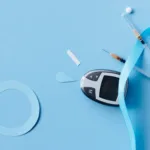The purpose of screening mammography is to identify malignant breast cancer (neoplasm) early, before women feel symptoms, when it is most curable, using low-dose X-rays.
Inform your doctor of any breast symptoms or issues, previous operations, hormone usage, whether breast cancer runs in your family or in your own history, and if you think you could be pregnant.
If at all feasible, get copies of your previous mammograms and provide them to your radiologist on the day of the examination.
What is a screening mammogram for breast cancer?
An X-ray of the breast is what mammography is. It is a screening device for finding breast cancer.
Mammograms are a critical component in the early diagnosis of breast cancer, along with routine clinical examinations and monthly self-examinations of the breast.
Annual mammograms are crucial beyond the age of 40, even if the thought of obtaining one could make you feel uncomfortable.
The National Cancer Institute reports that, after skin cancer, breast cancer is the second most frequent cancer in women in the country. [ref]
Advances in Screening Mammography for Breast Cancer:
Digital mammography, computer-aided detection, and breast tomosynthesis are three new mammography advancements.
Computer-aided detection:
Systems look for anomalous regions of density, bulk, or calcification that can point to the presence of cancer in digital mammographic images.
The radiologist is informed to carefully examine these spots when the CAD system highlights them in the pictures.
Digital mammography:
Also known as full-field digital mammography (FFDM), this type of mammography uses electronics in place of X-ray film to create mammographic images of the breast.
These systems are comparable to those in digital cameras, and because of their effectiveness, it is possible to take better photographs with less radiation.
The breast pictures are uploaded to a computer for the radiologist’s evaluation and long-term archiving.
Digital mammography is identical to a traditional film mammogram in terms of how the patient feels throughout.
Breast tomosynthesis
Also known as three-dimensional (3-D) mammography and digital breast tomosynthesis (DBT), is a sophisticated technique for acquiring pictures of the breast that combines many images taken from various perspectives to create a three-dimensional image set.
Thus, 3-D breast imaging is comparable to computed tomography (CT) imaging, in which a 3-D reconstruction of the body is made by fusing together a number of thin “slices.”
Despite being somewhat greater than that used in normal mammography for some breast tomosynthesis systems, the radiation dose is still below the FDA-approved acceptable limits for mammogram radiation.
Some methods use dosages that are quite comparable to those used in traditional mammography.
Typical uses of a screening mammogram:
Mammograms are used as a screening method to find breast cancer in women who have no symptoms in the early stages.
Women who exhibit signs, including a lump, soreness, skin dimpling, or nipple discharg,e can also utilize them to find and identify breast cancers.
Since mammography may identify abnormalities in the breast years before a patient or doctor can feel them, it is crucial in the early identification of breast cancer.
The National Comprehensive Cancer Network (NCCN) and the American College of Radiology (ACR) now suggest screening mammography for women beginning at age 40. [ref]
Annual mammograms, according to research, can discover breast tumors at an early stage, when treatment options for them are most favorable.
Also, women who have suffered from breast cancer and those who are at higher risk owing to a family history of breast or ovarian cancer should get professional medical counsel on the need for additional screenings and if they should start screening before age 40 [ref].
In addition to your yearly mammogram, if you have a high risk of developing breast cancer, you might also need to get a breast MRI.
When to prepare yourself for a screening mammogram?
The American Cancer Society (ACS) and other specialized groups advise speaking with your doctor about any new findings or issues with your breasts before scheduling a mammogram.
Additionally, let your doctor know about any past operations, hormone usage, and any personal or family history of breast cancer.
If your breasts often feel sore the week before your period, avoid scheduling your mammogram at that time. The week after your menstruation is the ideal time for mammography.
Always let your doctor or the X-ray technician know if you think you could be pregnant.
How to prepare for a screening mammogram for breast cancer?
- Describe to the technician doing the exam any breast complaints or issues.
- Ask when your findings will be available; if your doctor or the mammography facility doesn’t contact you, do not assume the results are normal.
- On the day of the exam, avoid using deodorant, talcum powder, or lotion on your breasts or beneath your arms. These could show up as calcium spots on the mammogram.
- If your previous mammograms were performed somewhere else, get hold of them and provide them to the radiologist. This may frequently be required for comparison with your present exam.
Is it safe to get a mammogram screening?
You are exposed to a very small quantity of radiation during mammography, just like with any other form of X-ray. The danger associated with this exposure is, however, quite minimal.
They will often wear a lead apron throughout the operation if they are pregnant and likely require mammography before the due date.
So yes it is safe.
Benefits of a Screening Mammogram:
- Breast cancer fatality risk is decreased with screening mammography. All forms of breast cancer, including invasive ductal and invasive lobular carcinoma, can be found using it.
- The screening mammogram increases a doctor’s capacity to spot tiny cancers. The patient has more therapy options when the cancer is smaller.
- In the conventional diagnostic range for this scan, X-rays often don’t have any negative side effects.
Risks of a Screening Mammogram:
The risk of developing cancer from excessive radiation exposure is always small. The advantage of a precise diagnosis, however, significantly outweighs the danger due to the low radiation dose employed in medical imaging.
For this process, different radiation doses are used. However, screening mammograms for early detection of malignant neoplasms of the breast are very cost-effective and may save lives.
- 97% Pure Berberine Powder – High-purity, plant-derived extract with a rich yellow color. Carefully processed and lab-tes…
- Naturally Bitter Taste – Berberine has a strong, naturally bitter flavor. Best enjoyed when mixed with smoothies, tea, c…
- 100g in Resealable Foil Pouch – Packaged in a premium aluminum pouch to protect from moisture and light, keeping the pow…

- 5 Delicious Flavors: Freeze-Dried Mango, Freeze-Dried Blueberry, Freeze-Dried Orange, Freeze-Dried Dragon Fruit & Freeze…
- Pure and Natural Ingredients: Our fruit powders are made without synthetic pesticides, GMOs, or harmful chemicals. Each …
- Health Benefits: Our carefully selected fruits are packed with antioxidants, vitamins, fiber, and digestive enzymes to s…

- 🌿 4 Tangy Citrus Flavors in One Pack: Enjoy a delicious variety of Orange, Lime, Lemon, and Kiwi powder – 5 sachets of e…
- 💧Easy to Mix & Refreshing: Just add to water, smoothies, sparkling drinks, or tea for a vibrant citrus kick. Dissolves i…
- 🛡️Rich in Vitamin C & Antioxidants: Made from real fruit powders, this mix offers a natural source of vitamin C to suppo…

- VARIETY PACK – Includes 5 delicious organic berry powder flavors: Freeze-Dried Goji Berry, Freeze-Dried Strawberry, Free…
- PURE INGREDIENTS – Made with 100% natural, freeze-dried berries and absolutely no added sugar, artificial ingredients, o…
- CONVENIENT PACKAGING – Contains 20 pre-portioned 5g packets (100g total), eliminating the need for measuring and ensurin…








